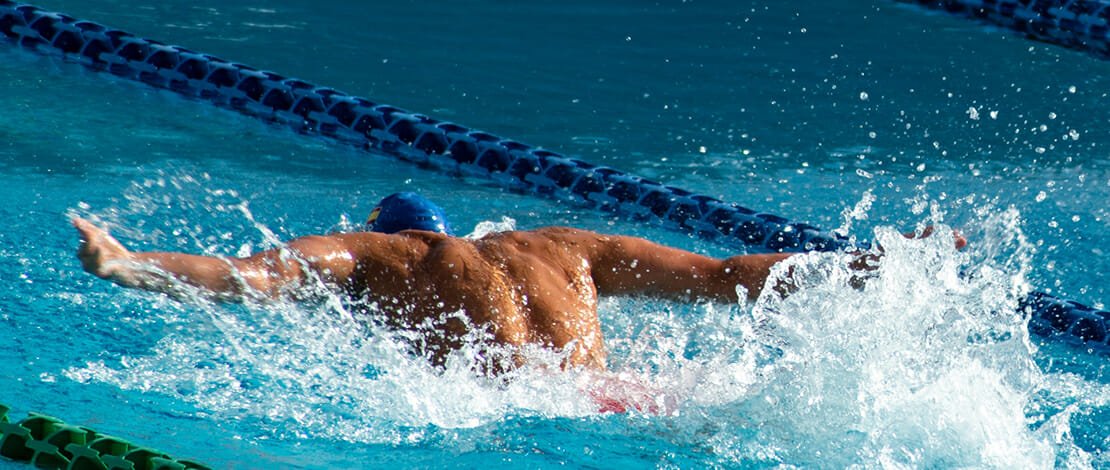How To Build Endurance For Swimming

Swimming requires endurance, stamina, and speed. Whether you’re a professional swimmer or a complete beginner, improving your swimming endurance can help you swim faster, further, and longer. Building your endurance also helps keep your heart and lungs healthy.
Since the lungs and heart have become more robust, they can efficiently supply the body with oxygen-rich blood. That blood will circulate through the muscles, providing more nutrients and oxygen. As a result, your performance will improve since your muscles can work harder for longer.
Contents
How to Build Swimming Endurance
If you want to improve your swimming endurance, you have to be consistent. For example, you can go to the pool and practice once a week. Once you’ve fully adjusted to this routine, you can add more days to your swimming regime. Here are other tips on how to increase swimming endurance.
Fewer reps, longer distance, and lower rest interval
Focus on the distance instead of speed. You don’t have to swim fast within a short period to boost your fitness performance and endurance. For instance, instead of performing an eight by 100 set, do a four by 200.
Maintaining the same pace throughout the session can increase your swimming endurance. You’ll get the same distance, but you will swim longer since you won’t be resting. Once you’re comfortable with this routine, you have to reduce the rest interval between each rep.
For instance, you can continue doing the four by 200 set. But instead of resting for 20 seconds, you can only have a 15-second break. So by lowering your rest intervals, you’ll learn to swim faster and longer without rest.
Sprint set, interval training, and using equipment
You want to get the heart rate up, so consider adding a sprint set to your routine. It’s an excellent way to increase your endurance. You can also do interval training. This type of training works the anaerobic and aerobic systems, so it can help improve your cardiovascular fitness level and strength.
There are different ways to incorporate interval training into your swimming regimen. For example, you can lower the rest intervals between each set. Another option is to maintain the rest interval but increase the intensity of your exercises. Thus, you have to do each group faster than the previous one.
If your body needs a boost or you’re tired, you can place a pull buoy between your thighs. It increases buoyancy for the hips, allowing you to focus on the stroke. The buoyancy for your hips also helps slow down each stroke and improve core strength.
Dryland and strength workouts
Performing dryland and strength workouts allows you to use different muscle groups. For instance, you can do two short muscle-focused sessions every week to build your endurance. You can build your core and back muscles, legs, and arms by working them outside of the water. Then, when you dive back in, you’ll feel less fatigue.
Adding dryland training to your routine can help the body use the muscles that provide power during each stroke. You can also try swimming in the open water since it’s more challenging than swimming in the pool. When you’re tired, you should rest. Do it if you feel off and your body tells you to take a break.
You can also do low-impact exercises in a swimming pool for a therapeutic workout routine. While it’s not a bad thing to push yourself, you should still prioritize your body. Include restorative workout days or days off in your regimen, and you’ll see your desired results.
Endurance swimming sets for beginners
If you’re a beginner, focus on increasing yardage. Don’t forget to warm up before you try anything. For example, you can swim 200-1000 meters to get your body going. Next, work on getting your body ready and heart up for your main exercises. Slower, longer swims help build distance and endurance. The last portion of the main set must be challenging. For the warm down, you can do easy swimming or drills.
As your endurance improves, your strokes play a major role in your resulting fatigue and swimming ability. Therefore, it would help if you learned how to swim correctly before developing strokes with bad habits.
Consider enrolling in adult-level swimming classes or working with an experienced coach at a local pool. Most importantly, you have to be patient with your progress. It will take time before you see the results of your efforts, so don’t be discouraged. Continue practicing, and, over time, you’ll build endurance from your endurance swimming sets.
Conclusion
Swimming endurance improves your cardiovascular fitness and makes your lungs and heart stronger. It also increases recovery during a hard training week. If you’re a newbie, you should first learn the basic techniques for each stroke. Eventually, you can gradually increase your fitness baseline until you can do the endurance swimming workouts for beginners.